Anterior Arthroscopy
Ankle arthroscopy is a recently pioneered medical technique that uses a small telescope, an “arthroscope”, which is inserted directly into the joint of the ankle itself. This telescope is connected to a camera allowing the surgeon to visualise the inside of the joint. Through a separate incision, the surgeon introduces small instruments into the joint to perform micro-operations. This avoids the need to open up the ankle, as in traditional surgical methods, with significant reduction in the risks of surgery and greatly improved recovery times.
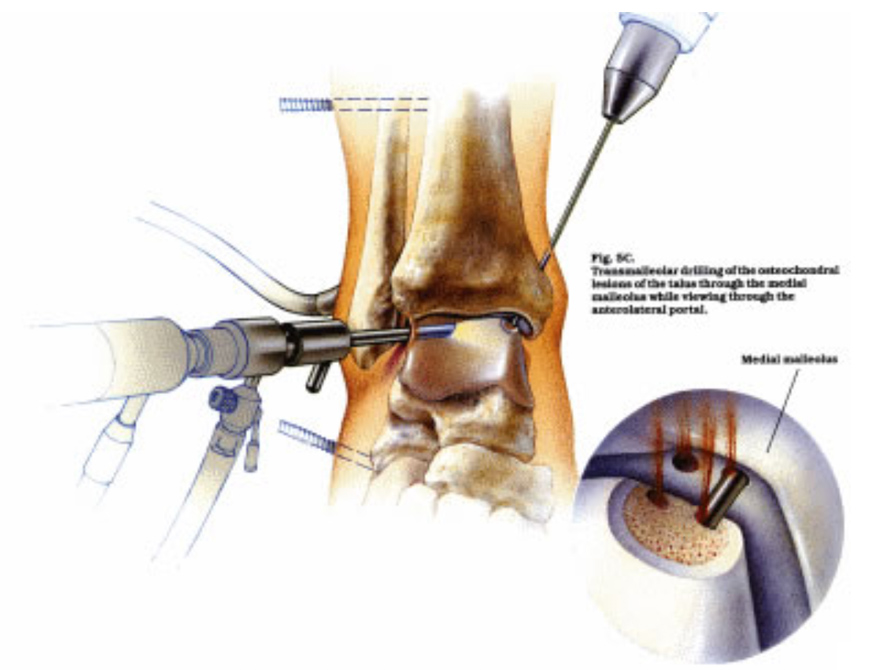
There are a wide variety of conditions and pathologies that can be treated arthroscopically. Your surgeon will have made the diagnosis following careful clinical examination and imaging with xrays, MRI scans or a CT scan.
The most common use for ankle arthroscopy is for the treatment of pain or discomfort following an injury to the ankle. This usually involves removal of excess scar tissue and inflammation (synovitis) in the ankle, or removal of ankle spurs and loose pieces from the joint (footballers ankle), and for treatment of damage to the articular surface (osteochondral defect).
MRI scans
This is the most common investigation for ankle problems and is excellent at identifying problems with the bones and joints, also ligament injuries and tendon injuiries. Nb. Approximately 10% of MRI scans will be "normal" and wont identify the problem as it is too fine to be shown - this doesn’t mean the ankle is normal!
Ankle Spurs
"Footballers ankle": Ankle Spurs form at the front of the talus and tibia
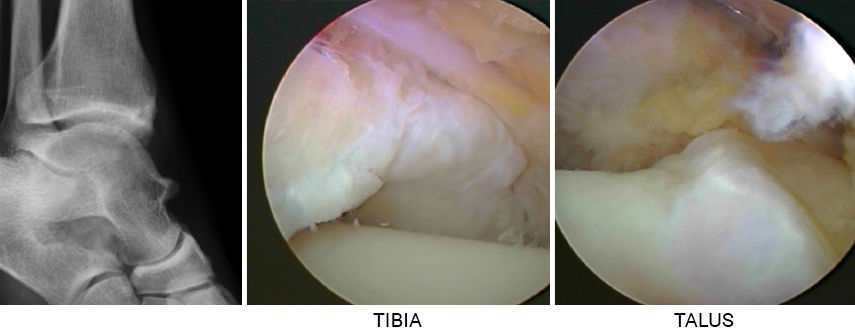
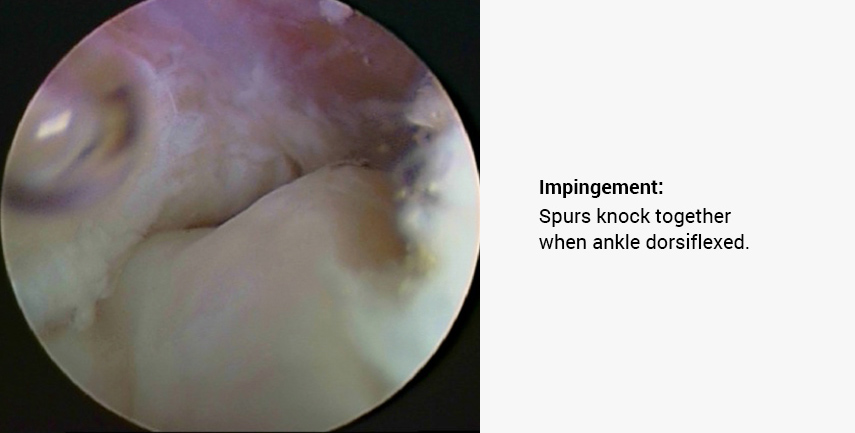
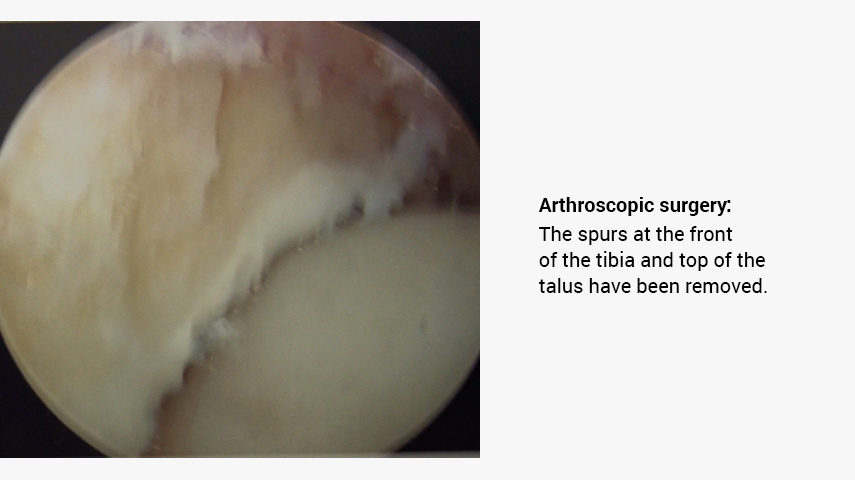
Osteochondral Defects:
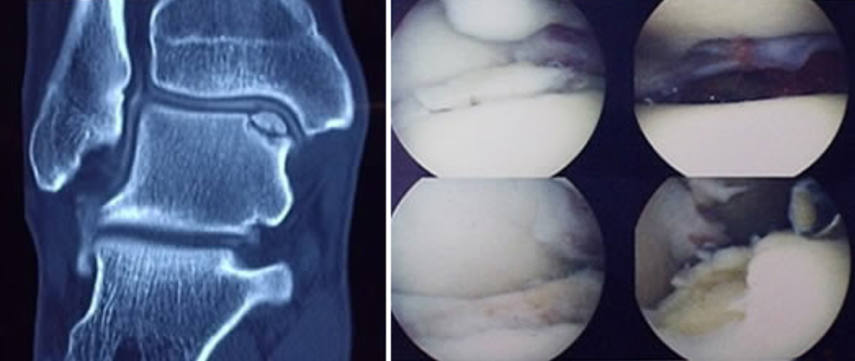
CT scan showing osteochondral defect of the ankle (talus) and arthroscopic images of the lesion showing loose cartilage and the view after arthroscopic treatment & removal.
Synovitis / Scarring
This is not visible on MRI and is only diagnosed after successful pain relief following an injection. Approximately 20% of ankle pain fits in this category and the MRI is "Normal".
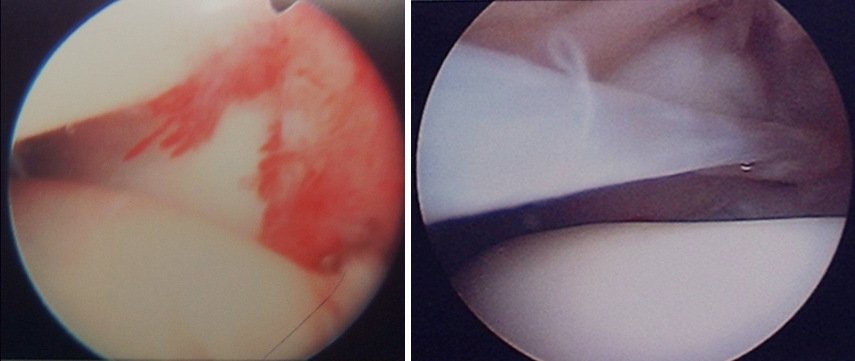
- Inflammation / Synovitis - the "red seaweed"
- Adhesions - bands of scar tissue that tether across the joint
Arthroscopic assisted surgery
The minimally invasive nature of ankle arthroscopy makes it an invaluable adjunct to other surgical techniques and is now the optimum way to perform ankle fusion surgery (Arthroscopic ankle fusion). It is also commonly used to assist surgery for ligament reconstruction, for precise reconstruction of ankle fractures and as an interim treatment for ankle arthritis.
Percutaneous Calcaneal Fracture Fixation: I also use it as the primary method to fix calcaneal fractures , thereby reducing the risks of surgery dramatically. (Percutaneous Arthroscopic Calcaneal Osteosynthesis: A Minimally Invasive Technique for Displaced Intra-Articular Calcaneal Fractures. J Foot Ankle Surg. 2015 Rosenfeld et al.)
Risks of surgery
Nerve Damage
There are two small nerves (superficial peroneal and saphenous) either side of the ankle joint, near where the portal incisions are made. There is a small risk (5%) that one of these nerves is damaged. This will leave a patch of numbness over either the inside border of the foot or over the back of the foot. Usually this is temporary, but may be permanent.
Infection
Deep infection due to Arthroscopic surgery is extremely unlikely. Published results show a risk of 1 in 25,000. If this does happen, further surgery to wash out the joint will be needed, and a course of antibiotics. Minor wound infections are also rare, but can normally be treated with oral antibiotics.
Stiffness & Swelling
Arthroscopic surgery causes much less soft tissue trauma than traditional open surgery. As such, stiffness & swelling tends to settle rapidly. In general, the joint will be Ok to walk on immediately, with some discomfort for the first two weeks. By six weeks, one should be able to perform full activities.
Recovery from surgery
You can expect some pain and swelling following surgery and your leg will need to be kept elevated for three days. Normal over the counter pain relief should suffice.
Depending upon the nature of any procedures undertaken during arthroscopy, you may be able to walk on the leg immediately, or you may need to wait several months before putting your full weight on the leg.
Activity and time off work
If you work in an office or your role does not involve standing, walking or driving, you may be able to return work several days after surgery. However most patients can expect to be out of work for at least one to two weeks.
It is possible to return to high-level sports following ankle arthroscopy, but expect at least four to six weeks of recovery before getting back into activities that stress the ankle. You will be advised on what will be appropriate in terms of activities and ranges of motion.